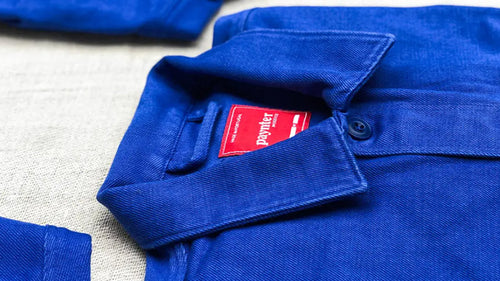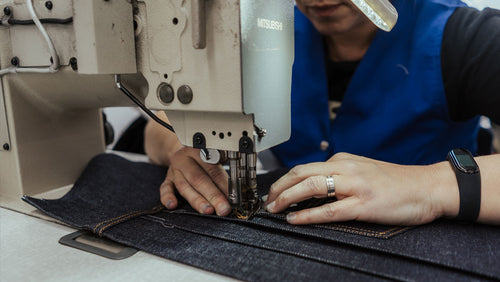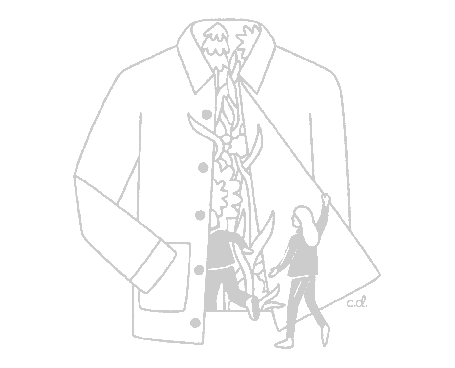
Connor Campbell is the designer behind our next limited edition woven label. We'd wanted to work with type for a while and love his experimental approach, so instead of finding a type designer, we brought in Connor to push the boundaries of what the label could be, taking what is normally a screen only application to a very analogue, woven label.
The brief started with the idea that constraints make you interesting, and we wanted a physical reminder to keep pushing on, each time you see the label behind that left hip pocket.
Ahead of the release, we spoke to Connor about his process and learnt about how this 76x76mm label involved physics in it's process!
How did you first get into motion design?
I started out animating The Graduates identity when I was an intern at It's Nice That in 2016 and got a brief glimpse into how motion can push a static design in unexpected directions. I then began incorporating it into every aspect of my work as an art director there, while animating posters for friends' record labels and club nights on the side.

Experimentation is at the heart of your studio. How much time do you dedicate to experiments on an average week?
This varies from week-to-week, but I make sure to dedicate at least 2 days time for good, thorough motion exploration at the start of each project that I take on. I'm not much of a forward-planner when it comes to motion, so diving straight into the early experimentation stage, I'm able to quickly get a sense of how something could come to life, instinctively pushing it in all directions, dialling it up to the extreme and then refining it from there. Also, while working through a project, so many new ideas and variations come to the surface, which I often put aside and play around with when I have some free time. Nothing is ever wasted!

When we were going over options for the animated label, you told us it relies on physics... can you explain more?!
So all of the type you see in the static design and the animation is spawned generatively into a simulated physical 3D space, with each glyph reacting to gravity and turbulence as they bounce around and collide with one another. This is great for spitting out lots of iterations, but the downside is you can't control what happens once you run the simulation, so you have to do this a LOT of times before you get one that behaves in the way you want it to.
Now that you're working for yourself, how do you keep learning?
I learn something new with every project I take on! When it comes to motion design, there's really not one set way of doing things, there are so many possible programs, plug-ins and settings to tweak that you have to learn on your feet. It means there's never a dull moment and you're always growing + adapting with each day that passes.

It's only been a year since going full time, and you've already worked for Sundance, Dazed, Dua Lipa, Nike, Warner Music... who would be a dream client to work with?
I've been running my own practice for just over a year now and I've been lucky enough to work with a lot of my dream clients and collaborators. I'm a big admirer of A24 and the films + TV shows they produce, so (to anyone from A24 who might be reading this) if there was an opportunity to work with them on some titles, I'd jump on that!
Where would you love to see your work used? Is this the first time you've seen your work in an analogue format?
I recently worked closely with a large format printer to take some of my rendered visuals and apply them to silver coated paper, and the results are mind-blowing - more to follow on this. It made me think for the first time that I'd love to organise some sort of physical exhibition, once things return to normal. Also those huge LCD billboards at Shibuya Crossing in Tokyo... that would be pretty cool.
REEL 2020 from Connor Campbell on Vimeo.



